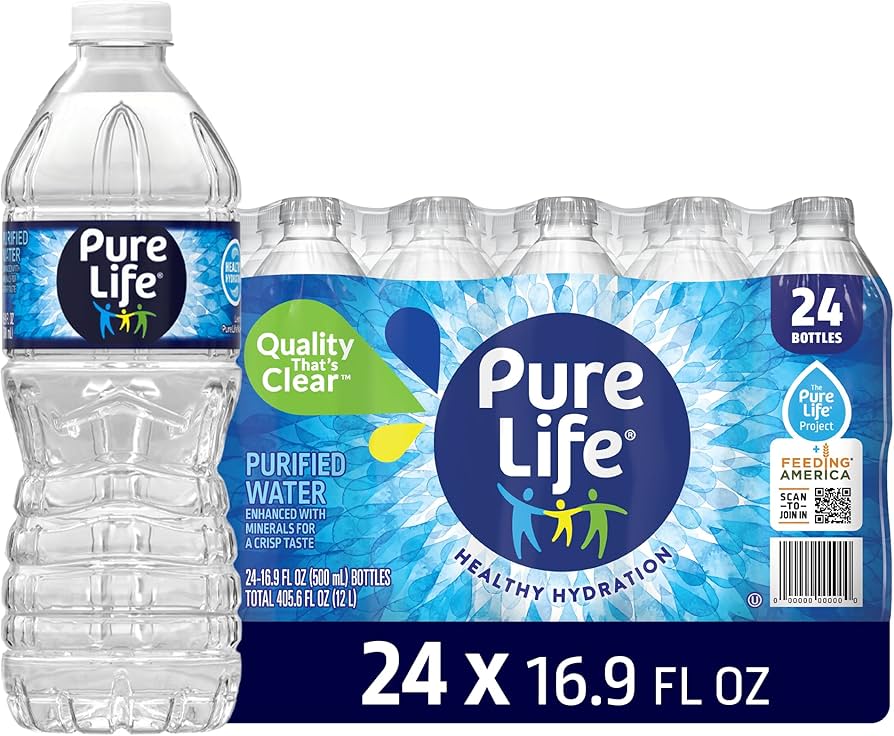
Have you ever noticed that some bottled water has a slightly sweet taste? It’s not uncommon, and there are several reasons why this might be the case. This article will delve into the science behind bottled water tastes sweet, exploring the role of minerals and purification processes in creating this subtle flavor profile. We’ll examine how naturally occurring minerals can contribute to sweetness and how certain purification methods might leave behind trace compounds that impart a faint sugary taste.
Bottled Water Taste
The taste of bottled water can vary significantly depending on its source, mineral content, and the purification processes it undergoes. While some brands aim for a neutral taste, others may have subtle hints of sweetness, saltiness, or even metallic notes. This variation is primarily due to the natural composition of the water source and the methods used to treat it before bottling.
Bottled water sourced from springs or aquifers often contains dissolved minerals that contribute to its unique flavor profile. These minerals can range from calcium and magnesium to sodium and potassium, each imparting its own characteristic taste. Additionally, the geological formations through which the water flows can also influence its mineral content and overall taste.
Minerals in Water
Minerals are naturally occurring inorganic substances found in various forms within the Earth’s crust. When rainwater percolates through soil and rocks, it dissolves these minerals, carrying them into groundwater sources like springs and aquifers. These dissolved minerals contribute to the hardness of water and can also influence its taste.
Common minerals found in bottled water include calcium, magnesium, sodium, potassium, bicarbonate, chloride, and sulfate. Each mineral has a distinct taste profile: calcium and magnesium often contribute to a slightly sweet or earthy taste, while sodium can impart a salty flavor. Bicarbonate can make water taste alkaline, while chloride and sulfate can add a slightly bitter or metallic note.
Sweetness from Minerals
While not all minerals contribute to sweetness, certain ones like calcium and magnesium can have a subtle sweetening effect on water. This is because these minerals interact with taste receptors on our tongues in a way that triggers a perception of sweetness. The amount of sweetness imparted by minerals depends on their concentration in the water.
For example, hard water, which contains higher levels of dissolved minerals like calcium and magnesium, may have a slightly sweeter taste compared to soft water with lower mineral content. This subtle sweetness is often described as being similar to that of honey or agave nectar, but it’s much less intense.
Purification Processes
Bottled water undergoes various purification processes to remove impurities and ensure its safety for consumption. These processes can include filtration, reverse osmosis, ozonation, and UV disinfection. While these methods effectively eliminate harmful contaminants, they can sometimes leave behind trace amounts of compounds that contribute to a faint sweetness in the water.
For instance, certain types of filters may retain small amounts of organic matter or residual chemicals that can impart a slightly sweet taste. Similarly, reverse osmosis, which uses a semi-permeable membrane to remove impurities, can sometimes concentrate dissolved minerals, including those that contribute to sweetness.
Trace Compounds
Trace compounds are minute quantities of substances present in water, often as byproducts of purification processes or natural occurrences. While these compounds are typically harmless at low concentrations, they can sometimes influence the taste of bottled water.
Some trace compounds known to impart a sweet taste include sugars, organic acids, and certain salts. These compounds may originate from various sources, such as residual cleaning agents used in bottling facilities, naturally occurring algae or bacteria in water sources, or even breakdown products of minerals during purification processes.
Conclusion
The subtle sweetness often perceived in bottled water is primarily attributed to the presence of naturally occurring minerals like calcium and magnesium, which interact with taste receptors on our tongues to trigger a perception of sweetness. Additionally, certain purification processes used in bottling water can sometimes leave behind trace amounts of compounds that contribute to a faint sugary taste. While these traces are generally harmless, they highlight the complex interplay between mineral content, purification methods, and the overall flavor profile of bottled water.
